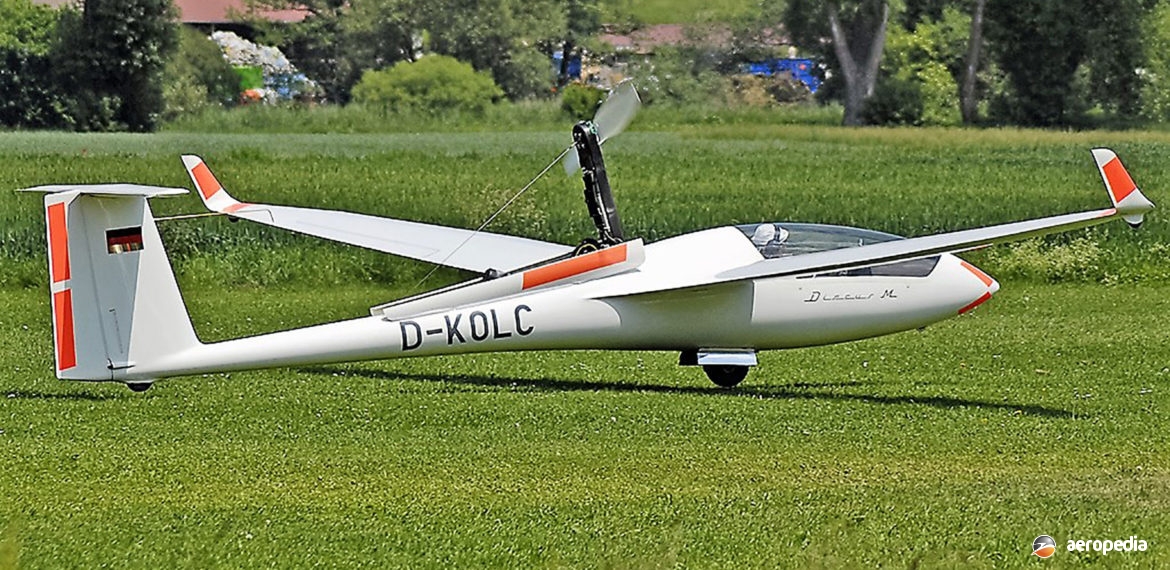Photograph:
Schempp-Hirth Discus BM D-KOLC (WPAviation Photography)
Country of origin:
Germany
Description:
Single-seat self-launched glider
Power Plant:
One 35 kw (47 hp) Rotax 463 two-cylinder horizontally-opposed air-cooled engine
Specifications:
- Wingspan: 15.00 m (49 ft 3 in)
- Length: 6.58 m (21 ft 7 in)
- Height: 1.30 m (4 ft 3 in)
- Wing area: 10.58 m² (113.9 sq ft)
- Aspect ratio: 21.3
- Max speed: 250 km/h (155 mph)
- Max glide ratio: 42.5:1
- Rate of sink: 35.35 m/min (116 ft/min)
- Empty weight: 230 kg (510 lb)
- Loaded weight: 525 kg (1,160 lb)
History:
The Discus series of gliders was designed by Klaus Holighaus and more than 850 examples of various models have been built, most as Standard Class gliders. The prototype was first flown in 1983 using the fuselage and tail unit of the original Ventus with a new unflapped wing. It was initially put into production in 1984 and built in Germany up to 1995 when production was transferred to the Czech Republic where it has been built by Schempp-Hirth Vyroba and is known as the Discus CS. It was the first production glider to have a distinctive swept-back wing leading-edge, this being introduced to produce a wing which minimised induced drag. To keep production costs down, a triple-trapezoidal approximation of the shape was adopted for the aircraft. Winglets eventually became available and many have been retrofitted. Two models of the fuselage were built, the Discus A with a narrow fuselage, and the Discus B with a wider fuselage.
The fuselage is built of glass-reinforced plastic around a steel tubular frame, the wing and tail surfaces also being of fibreglass, the main spar being of carbon fibre. Water ballast comprising 6.5 litres (1.42 Imp gals) is carried in a tank in the fin for trimming purposes when the main wing mounted ballast tanks (a total of 184 litres / 40.47 Imp gals) are in use, giving a max wing-loading of 50 kg/m².
The type has been used extensively over the years in competitions, winning the 1985, 1987 and 1989 World Gliding Championships. Some examples were fitted with a sustaining engine and these are known as the Discus T. A number are fitted with the Rotax 463 engine and can be self-launched and these are known as the Discus BM.
A number of examples of the Discus have been registered in Australia and New Zealand, models including the Discus CS, T, 2a, B, 2CT, BT, 2A etc. A Discus BM VH-ZAR (c/n 7), a 1994 model, is registered in New South Wales; and a Duo Discus became VH-FBE (c/n 37) on 21 January 2016.

